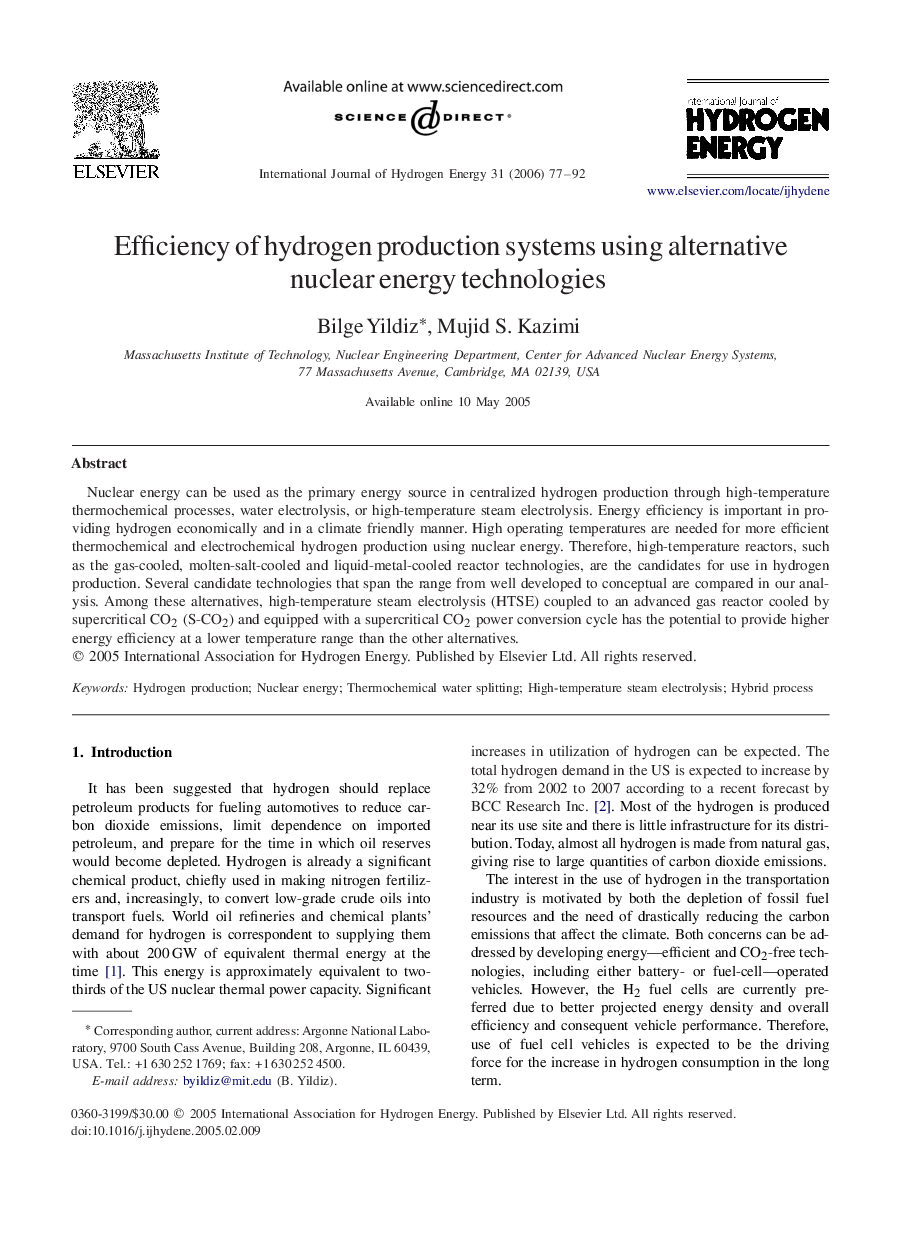| کد مقاله | کد نشریه | سال انتشار | مقاله انگلیسی | نسخه تمام متن |
|---|---|---|---|---|
| 1275979 | 1497697 | 2006 | 16 صفحه PDF | دانلود رایگان |

Nuclear energy can be used as the primary energy source in centralized hydrogen production through high-temperature thermochemical processes, water electrolysis, or high-temperature steam electrolysis. Energy efficiency is important in providing hydrogen economically and in a climate friendly manner. High operating temperatures are needed for more efficient thermochemical and electrochemical hydrogen production using nuclear energy. Therefore, high-temperature reactors, such as the gas-cooled, molten-salt-cooled and liquid-metal-cooled reactor technologies, are the candidates for use in hydrogen production. Several candidate technologies that span the range from well developed to conceptual are compared in our analysis. Among these alternatives, high-temperature steam electrolysis (HTSE) coupled to an advanced gas reactor cooled by supercritical CO2 (S-CO2) and equipped with a supercritical CO2 power conversion cycle has the potential to provide higher energy efficiency at a lower temperature range than the other alternatives.
Journal: International Journal of Hydrogen Energy - Volume 31, Issue 1, January 2006, Pages 77–92